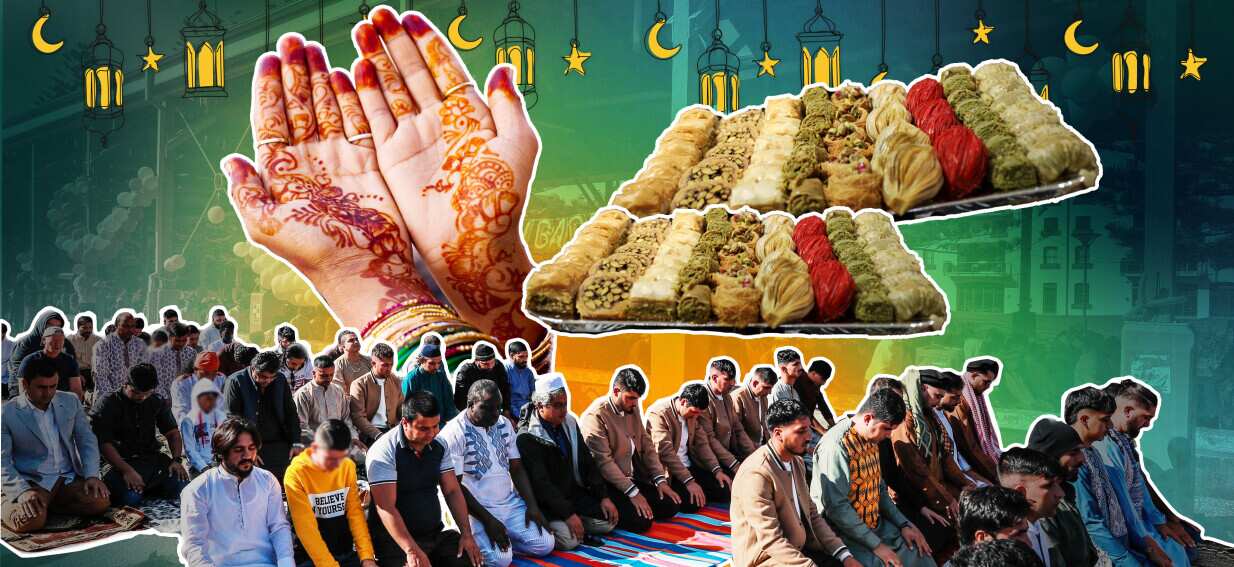
Come Monday, Muslims across Australia will be celebrating Eid al-Fitr, marking the end of the holy month of Ramadan.
The festivities involve prayer, charity, feasting and spending time with family, friends and the wider community.
Here’s what you need to know about Eid al-Fitr and also why it is also known as the “lesser Eid”.
What is Eid al-Fitr?
Eid al-Fitr marks the end of the , during which Muslims abstain from eating and drinking between sunrise and sunset.
Over 800,000 Muslims in Australia and nearly two billion around the world observe Ramadan and celebrate Eid when it draws to a close.
On the first day of Shawwal, which is the 10th month in the Islamic calendar, Muslims observe Eid al-Fitr, a grand celebration after a month of fasting and prayers.
It is celebrated over three days and is the first of two Eid celebrations each year.
When is Eid al-Fitr?
Eid al-Fitr starts at the end of Ramadan, and — like Easter — this festival does not have a fixed date.
Islam follows a lunar calendar, so the sighting of a new moon determines the start of each month.
The Australian National Imams Council and the Australian Fatwa Council have announced that Eid al-Fitr will be celebrated on 31 March this year.
Ramadan started on 1 March in Australia.
Globally, there are different methods for calculating when Eid should be celebrated and Eid can be celebrated across two days by different cultural groups.
The Australian National Imams Council and the Australian Fatwa Council calculate the date based on the birth of the new moon before sunset, the duration of the moonset after sunset and the possibility of sighting the moon.
How is Eid al-Fitr celebrated?
Celebrations often involve prayers, feasting and giving to charity.
Eid al-Fitr traditionally begins with a prayer service, followed by a sermon. At the start of the prayer, Muslims pay zakat al-Fitr, a donation for those in need.
This year the Grand Mufti of Australia, Dr Ibrahim Abu Mohamad, and the Imams Council to particularly support communities in Gaza through “Dua’a (prayer), generous donations and ongoing support.”
Eid is also a time for Muslims to wear their best outfits and gather with other members of their community after prayers to eat celebratory meals and sweets.
Elders typically give gifts to children or younger relatives.
If you want to wish somebody well during the celebration, the most common phrase is “Eid Mubarak”, which translates to “blessed Eid” in Arabic.
Where is Eid Al-Fitr celebrated in Australia?
Muslims across Australia celebrate this festival in their homes.
But community organisations leading up to Eid which highlights the importance of community and togetherness.
Are there two Eid celebrations, and what is meant by ‘lesser Eid’?
There are two Eids each year.
Eid al-Fitr is the first of two celebrations in the Islamic calendar.
It is known as the “lesser Eid”, while takes place a few months later and is referred to as the “greater Eid”.
Eid al-Adha, also known as the Eid of sacrifice, is celebrated on the 10th day in the final month of the Islamic calendar, Dhul Hijjah. It marks the third day of the Hajj pilgrimage in Saudi Arabia.
The celebration commemorates the Prophet Ibrahim, who Muslims believe was commanded by God to sacrifice his son in commitment to his faith.
Similar to Eid al-Fitr, neither Hajj nor Eid al-Adha have a fixed date.
In 2025, Eid al-Adha is expected to fall in early June.
